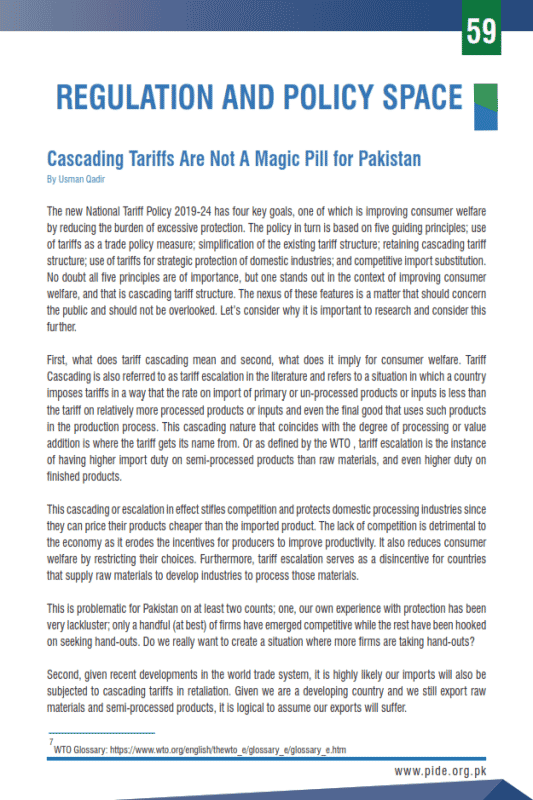
Pakistan Institute of Development Economics
- Home
Our Portals
MenuMenuMenuMenuMenuMenuMenu - ResearchMenuMenuMenuMenuMenuMenuMenu
- Discourse
- The PDR
- Our Researchers
- Academics
- Degree Verification
- Thesis Portal
- Our Portals
Cascading Tariffs Are Not A Magic Pill for Pakistan
The new National Tariff Policy 2019-24 has four key goals, one of which is improving consumer welfare by reducing the burden of excessive protection. The policy in turn is based on five guiding principles; use of tariffs as a trade policy measure; simplification of the existing tariff structure; retaining cascading tariff structure; use of tariffs for strategic protection of domestic industries; and competitive import substitution. No doubt all five principles are of importance, but one stands out in the context of improving consumer welfare, and that is cascading tariff structure. The nexus of these features is a matter that should concern the public and should not be overlooked. Let’s consider why it is important to research and consider this further. First, what does tariff cascading mean and second, what does it imply for consumer welfare. Tariff Cascading is also referred to as tariff escalation in the literature and refers to a situation in which a country imposes tariffs in a way that the rate on import of primary or un-processed products or inputs is less than the tariff on relatively more processed products or inputs and even the final good that uses such products in the production process. This cascading nature that coincides with the degree of processing or value addition is where the tariff gets its name from. Or as defined by the WTO , tariff escalation is the instance of having higher import duty on semi-processed products than raw materials, and even higher duty on finished products.



